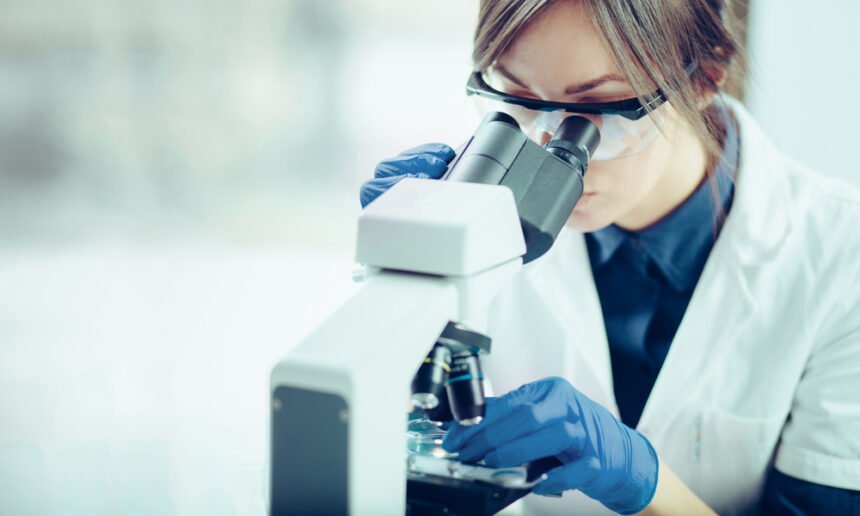Over the past few years, the healthcare industry has made some giant strides forward in disease prevention, detection, and treatment. And although the industry now faces a generational challenge in dealing with the rapid spread of the coronavirus (COVID-19) pandemic, it does so at a time when it’s never been better equipped for the job. The difficulties notwithstanding, the fact that global health officials believe that a vaccine for the deadly disease may be mere months away is a testament to that.
The reason they’re so confident is that laboratory technology has advanced to the point that the historical vaccine development process, which once stretched on for an average of 10-15 years, is now a short as mere months. And indeed, there are already coronavirus vaccine candidates approaching their final stage of efficacy testing, with even more coming behind them.
But the good news belies a difficult reality for modern laboratories – a reality where staffing and skill shortages are common, and automation remains expensive or unavailable. And the current global demand for laboratories to keep up with wide-scale pandemic-related diagnostic testing is making an already bad situation even worse. Here’s a look at the persistent shortages of qualified lab technicians and what’s fueling the problem.
A Pre-Existing Condition
Although it’s tempting to assume that the sudden upsurge in the demand for laboratory services is to blame for the shortage of qualified lab technicians, the truth is that it’s a situation with a decades-long history. It began with a decline in the number of training programs available to interested students, both in the US and elsewhere around the globe. That slashed the number of students in training to work as lab technicians and led to a persistent supply shortage in the industry.
Then, facilities all over started to see many of their most experienced staff reach retirement age, with nobody in the employment pipeline to replace them. According to several industry associations, as many as 50% of today’s lab technicians will reach retirement age within the next ten years, which illustrates how the problem will only accelerate.
Complex New Skills Required
Further complicating matters for laboratories looking for ways to increase the supply of qualified technicians is the fact that there have been such rapid advances in diagnostic technology in recent years. Today’s labs are filled with purpose-specific equipment like luminescence plate readers, often from multiple vendors like BMG Labtech and others, all of which require specific training to operate. And because each lab will have specific skill needs due to the varying equipment, plenty of on-site training is required even for students who’ve gone through standard classroom training.
The trouble is, the ongoing shortages of qualified workers mean there’s nobody free in the average lab to conduct such training. That means many facilities face the prospect of shutting down to make time to train and onboard new staff, which only puts them further behind in their work and endangers their financial wellbeing. And since the availability of new candidates only occurs in fits and starts, they can’t even make regular training a part of the planned facility schedule – a catch-22 situation that defies simple solutions.
Automation Remains Elusive
While it’s true that there have been big strides in laboratory automation, and that the market for such technology is growing, it’s important to note that most of the available solutions only make lab workers more productive. There isn’t, at present, any easy or cost-effective way to automate all of the work that lab technicians do. So, at the moment, the best that lab managers can hope for is to squeeze a bit more productivity out of the workers they do have.
So far, the closest anyone has come to a fully-automated lab technician replacement is a project by the University of Liverpool in the UK. They’ve developed a preprogrammed autonomous robotic system that can conduct lab work and experiments in 22-hour shifts, pausing only to recharge its batteries. Testing of the system is still underway, however, and that means today’s labs still face a long wait for a technological solution to their staffing woes.
The Bottom Line
Right now, despite the valuable work they do, laboratories all over the world are struggling to keep pace with a workload that shows no signs of slowing down. As each year passes, they will lose more qualified workers to attrition and retirement, with few ready options to replace them. For the global healthcare industry, it’s a problem that risks the loss of so many of the diagnostic and research capabilities gained in the past few decades. And as the current COVID-19 crisis so amply demonstrates, they’re capabilities that can mean life or death for hundreds of thousands of people.
So, the race is on for laboratories everywhere to see if they can automate their way out of trouble using the technology available today, or if they’ll suffer a collapse before adequate solutions appear. For their sake and everyone else’s as well, let us hope a solution appears soon.

